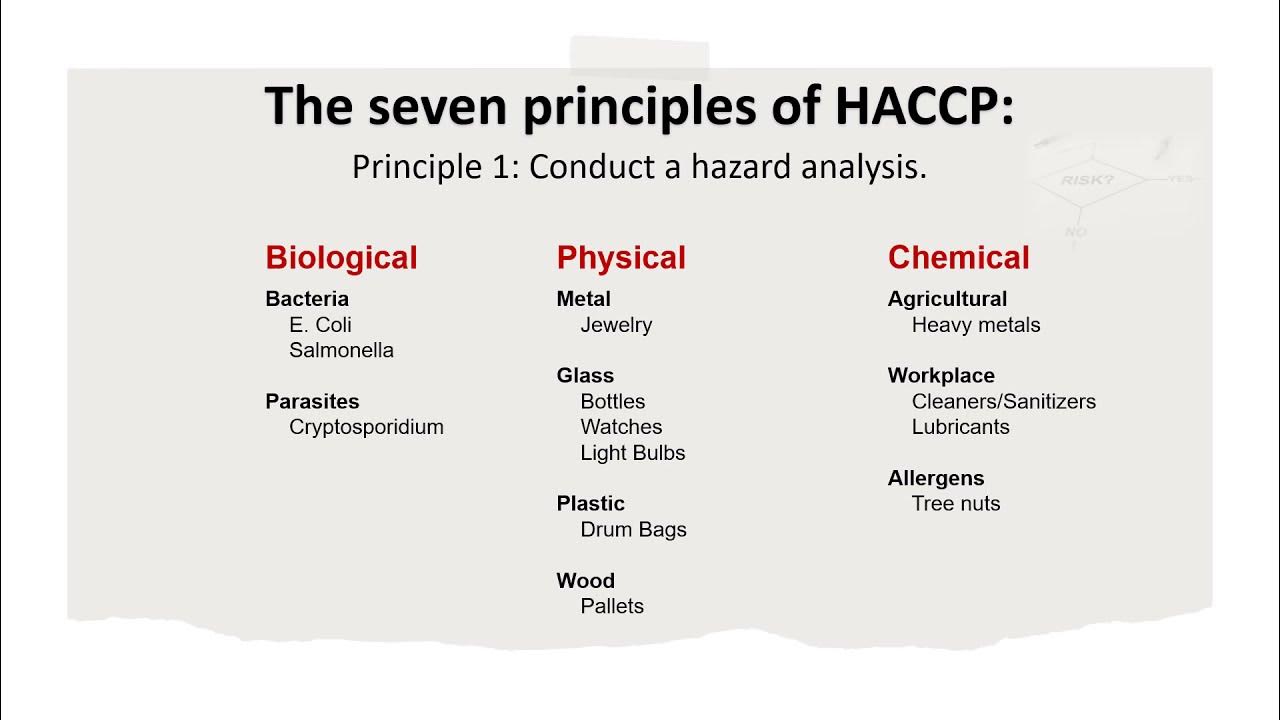Testing & Adjusting pH Levels
Summary
TLDRIn this video, a food scientist demonstrates the critical process of controlling the pH level in salsa to ensure its safety by preventing the growth of Clostridium botulinum (C. bot). The script follows the creation of test salsa samples with varying amounts of acid (lemon juice or vinegar) and tests their pH to ensure it falls below the critical threshold of 4.6, ideally below 4.2. The process includes homogenizing samples, calibrating a pH meter, and taking precise readings to achieve the ideal pH for safety. The final goal is to ensure the salsa is both safe from bacterial contamination and enjoyable for consumers.
Takeaways
- 😀 Proper pH control is critical to ensuring food safety by preventing the growth of harmful microorganisms like Clostridium botulinum (C. bot).
- 😀 C. bot is a major concern in salsa, as its spores can survive boiling temperatures and grow in vacuum-sealed jars with a pH above 4.6.
- 😀 The goal is to lower the pH of salsa to below 4.6, ideally aiming for a pH below 4.2, to prevent C. bot from producing toxins.
- 😀 Heat processing alone will not destroy C. bot; it can survive under vacuum-sealed conditions, making pH control essential for safety.
- 😀 Adding acid (such as lemon juice or vinegar) to salsa helps lower the pH to safer levels, and different amounts are tested for effectiveness.
- 😀 Three test samples are created: one with 40 milliliters of acid (A1), one with 80 milliliters of acid (A2), and a control sample with no added acid (A3).
- 😀 Each sample's pH is tested twice, using precise homogenization and repeated pH measurements to ensure accurate results.
- 😀 The pH meter is calibrated and used to test the pH of each sample, ensuring reliability and repeatability of results.
- 😀 For accuracy, samples are homogenized, and multiple readings are taken from each beaker to calculate the average pH.
- 😀 The final decision is made by selecting the sample with the lowest pH (below 4.2), ensuring safety from C. bot while maintaining acceptable flavor.
- 😀 After selecting the appropriate acidified salsa formula, further sensory analysis and heat processing tests are conducted to ensure both safety and consumer enjoyment.
Q & A
Why is controlling the pH of salsa important for food safety?
-Controlling the pH of salsa is crucial because a low pH helps prevent the growth of harmful bacteria like *Clostridium botulinum* (C. bot.), which can produce deadly toxins in conditions with low oxygen, such as vacuum-sealed jars.
What is the main concern regarding *Clostridium botulinum* in salsa production?
-The main concern with *C. bot.* is that it can produce toxins in vacuum-sealed jars of salsa with a pH above 4.6, especially if the salsa is stored at room temperature, creating a perfect environment for bacterial growth.
Why does cooking the salsa not eliminate the risk of *C. bot.* growth?
-Cooking the salsa does not eliminate the risk of *C. bot.* because the bacteria can form protective spores that survive boiling temperatures. These spores can later germinate and grow in conditions without oxygen, such as in vacuum-sealed jars.
What pH level is required to prevent *C. bot.* from growing in salsa?
-A pH level below 4.6 is required to prevent *C. bot.* from growing, with a target pH level below 4.2 for added safety.
Which acids are being considered for lowering the pH of salsa, and why?
-Lemon juice and vinegar are being considered as acids to lower the pH of the salsa because both are commonly used in food processing and can effectively acidify the salsa, making it safer from *C. bot.* growth.
How was the pH of different salsa samples tested?
-The pH of the salsa samples was tested by homogenizing each sample, dividing it into two beakers, and using a calibrated handheld pH meter to take two pH readings from each beaker. The readings were then averaged to ensure accuracy.
What is the purpose of homogenizing the salsa samples before testing the pH?
-Homogenizing the salsa samples ensures that the mixture is uniform and consistent, which helps achieve accurate and repeatable pH measurements.
Why is it important to rinse the pH meter between each reading?
-Rinsing the pH meter between each reading prevents contamination and ensures that the probe is clean, allowing for accurate and consistent pH measurements.
What was the outcome of the pH tests on the three salsa samples, and which sample was deemed safest?
-The salsa sample with 80 milliliters of acid (Sample A2) was found to have a pH below 4.2, which was considered safe for preventing *C. bot.* growth. Samples with a pH above 4.2 would require more testing and adjustments to ensure safety.
What additional steps might be taken after determining the safest pH level for the salsa?
-After determining the safest pH level, further testing may be done to refine the process, and sensory analysis (taste testing) will be conducted to ensure the salsa is not only safe but also enjoyable for consumers.
Outlines

このセクションは有料ユーザー限定です。 アクセスするには、アップグレードをお願いします。
今すぐアップグレードMindmap

このセクションは有料ユーザー限定です。 アクセスするには、アップグレードをお願いします。
今すぐアップグレードKeywords

このセクションは有料ユーザー限定です。 アクセスするには、アップグレードをお願いします。
今すぐアップグレードHighlights

このセクションは有料ユーザー限定です。 アクセスするには、アップグレードをお願いします。
今すぐアップグレードTranscripts

このセクションは有料ユーザー限定です。 アクセスするには、アップグレードをお願いします。
今すぐアップグレード関連動画をさらに表示

The pH Scale & Meter Calibration

Microorganisms in Food

BOTULISMO - Doenças Bacterianas | Biologia com Samuel Cunha

A Man Had 2 Week Old Baked Potato For Dinner. This Is What Happened To His Brain.

What is HACCP and what are the seven HACCP principles? HACCP Explained │ Food Safety

Food borne infection and intoxication
5.0 / 5 (0 votes)
